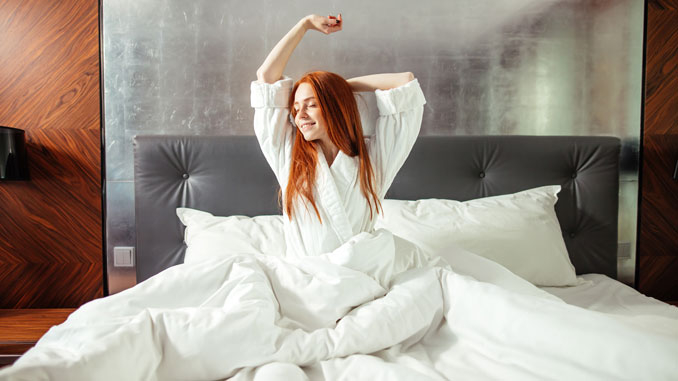
Quality (and quantity) of sleep is a key component of optimal health. In fact, for the average adult, both the American Academy of Sleep Medicine and Sleep Research Society recommend a minimum of seven hours of sleep per night on a regular basis to stave off issues related to chronic sleep deprivation including weight gain, diabetes mellitus, hypertension, cardiovascular disease, stroke, and death from any cause. So, we know sleep is important, but if you struggle to sleep well, what can you do?
Snoring vs. Sleep Apnea
First, it’s important to recognize what’s causing poor sleep. “Although it is common for all of us to feel a ‘dip’ in energy levels in the early afternoon, it is not normal to fall asleep anytime we are not actively engaged,” says Connie Tang Singh, MD, a sleep medicine specialist at Pacific Sleep Disorders Center. If you’re experiencing this level of daytime sleepiness, it could be time to troubleshoot.
“Pure snoring, besides being a nuisance to your bed partner, does not have long term health consequences per se,” Dr. Singh explains. But that doesn’t mean it’s not disruptive. To alleviate snoring, buy an over-the-counter mouth guard or adjust your sleep position. “Sleeping supine, or on your back, is usually the most disruptive,” she says. As for pillows and mattresses, it’s important to outfit your bed with what will make you most comfortable and support your preferred sleep position, and modern technology has made available targeted solutions. For example, those who struggle with snoring or sleep apnea typically benefit from an elevated sleeping position, and adjustable mattresses help keep sleepers upright while reducing obstruction caused by the tongue or laryngeal muscles.
Modern Mattresses
Remote controlled mattresses aren’t the only sleep solutions on the market. Memory foam like Tempur-Pedic is a great material for those who like a firm bed or struggle with a restless sleep partner. If you’re a light sleeper, a Tempur-Pedic mattress absorbs movement to help you sleep undisturbed.
A downfall to these materials, however, is they don’t always breathe well and those who sleep hot may struggle. Cooling mattresses offer a potential solution in brands such as Saatva, Dream Cloud, or Cocoon (and many offer free trials to first-time buyers).
Essentially, just be aware of your sleep preferences and buy a mattress that caters to the specifics. If you’re unsure how you sleep, a sleep study may hold the answers. “The gold standard measurement for sleep is actually brain EEG, which is part of what we do at the sleep clinic during a sleep study,” Dr. Tang Singh says. Then, buy a mattress that meets your natural sleep position such as a memory foam or hybrid mattress for back sleepers, a softer or plusher mattress for side sleepers, or a firmer mattress for those who sleep belly down. After you’ve answered the big question, you can get into specifics that address sleep temperature, your bed partner, price range, and more.

